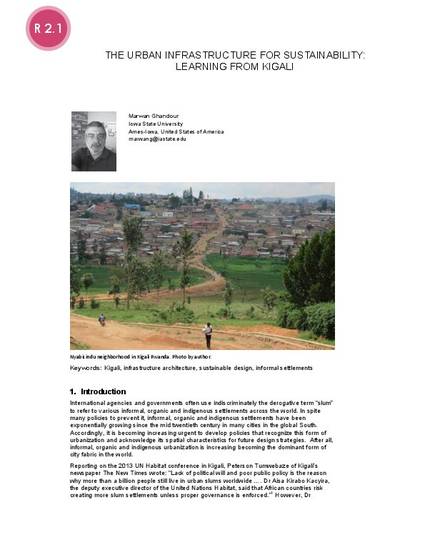
Until 2013, when a new master plan for the city was approved, Kigali had very few urban regulations in place. Incremental constructions, usually associated with informal urbanization, were the norm rather than the exception. Most of the city fabric grew organically creating a unique configuration of urban adjacencies, which would be improbable for planners and designers to imagine. This configuration is particular to the geographic, economic and social conditions of the city as incremental urbanization slowly adjusted to the living conditions, through the actions of thousands of city residents over a long period of time. These actions were formed in reaction to people, administrations, businesses, and occupations with an urge to sustain their presence in the city. In short, no document or design initiative can replicate the depth of information that the physical environment of these neighborhoods contains. This paper is a call for designers to mine the complex ways in which neighborhoods are produced in order to inform architectural and urban strategies that can be integrated within the spatial production of the city. In that sense, it is a call to rethink the way we identify and label indigenous organically developed low-income neighborhoods in order to describe them for what they are and not to dismiss them as “slums” waiting to be corrected, erased or healed. These neighborhoods lack adequate infrastructure, harbor unhealthy conditions, but they are also actively participating in the city’s spatial production. In fall 2015, I worked with fifteen architecture students to develop interventions in low-income neighborhoods in Kigali by analyzing existing processes of production and implementing a process of change towards more sustainable living conditions. Using these academic experiments, archival research, multiple interviews and fieldwork in Kigali, I want to argue in this paper that sustainability in architectural practice needs to incorporate questions of urban infrastructure within the very specific contexts in which these practices are to be implemented.
Available at: http://works.bepress.com/marwan_ghandour/18/

This proceedings is from SFC2016 Conference Proceedings (2016): 176–184.